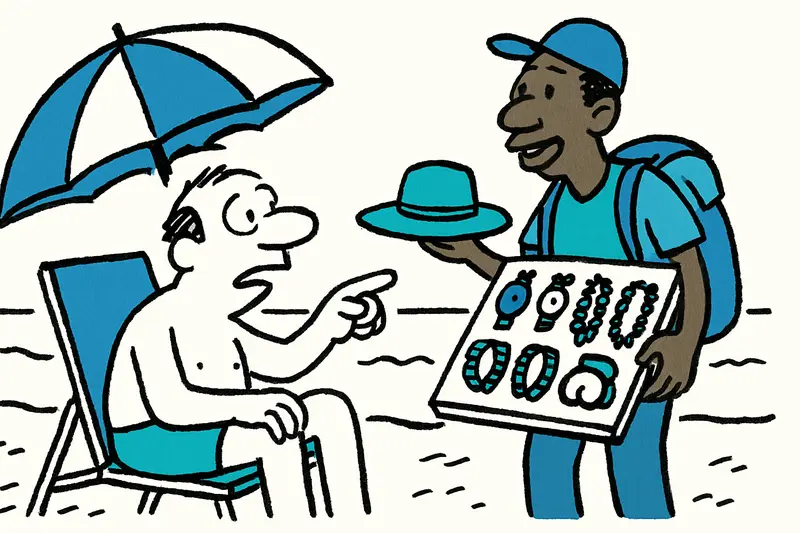In the early 1990s, Senegalese street vendors were a familiar sight on Mallorca's beaches. A look back at the goods, routes, and lives behind the selling stalls.
A Slice of Everyday Life That Looks Different Today
Three decades ago, they were as familiar as the sound of the sea: men from West Africa who walked the promenade with a chest-mounted stall or a backpack. Anyone strolling along Playa de Palma on a hot afternoon would meet them between sun umbrellas and cafés — always friendly, often patient, sometimes with a loud 'barato, barato'.
What They Sold
The range at the time was surprisingly tangible: wristwatches with built-in alarm clocks, colorful bead necklaces, carved wooden figures, fabric bags, and delicate sun hats in a cowboy look. Nothing very valuable — but enough to bring home a few euros each day. Today many associate more with imitations of brand-name goods, football jerseys, or sunglasses. The change in offerings shows how demand on the island has shifted.
How they lived and worked
Official work permits were rare. Only a small portion worked completely legally, others improvised. Some lived in simple neighborhoods near Palma, others shared spaces far outside, gathering before dawn and set off to the coast. I remember an older man who always stood at 10 o'clock at the corner of the Paseo, with a box full of carved birds — he never shouted to sell, but preferred to smile and wait until someone stopped.
No quick wealth — the business was usually hard. Many did not come to get rich, but to earn enough for their families. By day selling, in the evenings discussions among colleagues, plans for the return trip to Dakar or for the next visa.
Controls and Prejudices
Police checks played a different role then than today. Authorities and law enforcement responded selectively; for many the situation was uncertain. Above all, stereotypes shaped the image: 'They all look the same' — such phrases I heard often when tourists and locals talked about the vendors. Behind every stall, though, was its own story.
Why this matters
These intimate looks into the 90s remind us that migration, work, and everyday life are closely intertwined. The people who sat on the beaches back then left traces: in small stories, in the sounds of daily life, in the memories of regulars and shop owners. Sometimes it's good to pause briefly and not only buy—but listen.
A look back, not a judgment. Just a few streets, a few voices, and the memory of a Mallorca that is constantly changing.
Similar News

Die Zeit auf Mallorca: Warum die Uhren hier anders ticken
Auf Mallorca läuft die Uhr offiziell anders als die Sonne — ein Erbe aus den 1940er-Jahren, das bis heute unseren Alltag...

Orange Weather Warning for Mallorca: Heavy Rain and Thunderstorms Set the Week
Aemet warns: Monday and Tuesday on Mallorca are under orange alert. Heavy rain, floods, and traffic disruptions are poss...

Life-threatening swimming accident in Ibiza: 73-year-old revived on the beach
During severe storms, a 73-year-old visitor swam despite a red flag. Lifeguards rescued her, and she is now seriously in...

Mummified Body Found in Abandoned House Near Santa Margalida
Between Can Picafort and Son Serra de Marina, teenagers discovered a mummified corpse in an abandoned house. Identity an...

Large Rockfall Blocks Ma-2141 Road Near Sa Calobra
After heavy rainfall, several rock blocks toppled onto the winding Ma-2141 toward Sa Calobra over the weekend. The road ...
